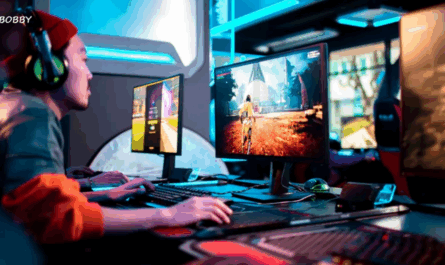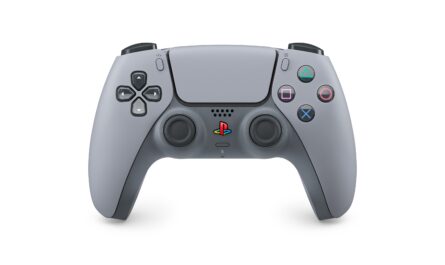NVIDIA has officially released the first full version of its NVIDIA App for Windows PCs, signaling the end of an era for the longtime GeForce Experience software. After months of beta testing throughout 2024, the app is now publicly available, bringing a streamlined experience that consolidates a wide range of features previously scattered across NVIDIA’s software ecosystem.
For years, PC gamers and creative professionals alike have relied on GeForce Experience for tasks such as driver updates, game optimization, and in-game overlays. The NVIDIA App maintains these familiar features but also integrates several functions that were formerly exclusive to the NVIDIA Control Center. This unification allows users to manage display settings, toggle G-Sync, adjust performance parameters, and access other advanced options directly from a single interface. NVIDIA has confirmed that additional Control Center functionalities will gradually migrate into future versions of the app.
Key Features of the New NVIDIA App
One of the standout improvements in the NVIDIA App is its updated in-game overlay, which now supports 4K resolution, 120FPS AV1 video capture, and a suite of AI-powered filters for RTX GPU owners. This overlay is designed to enhance both gaming and streaming experiences, allowing users to record ultra-high-definition gameplay while leveraging AI-driven enhancements for visuals and performance.
The app also simplifies game optimization. Users can now adjust a slider between “Performance” and “Quality” settings for each title, making it easier to see which graphics options are currently active. This intuitive design ensures that both casual and hardcore gamers can quickly optimize their systems without needing to dive into multiple menus or technical documentation.
Integration With Drivers and Future Updates
Currently, PC users with NVIDIA graphics cards must download the NVIDIA App independently. However, NVIDIA plans to integrate it into future Game Ready and Studio Ready driver packages, ensuring seamless installation and updates for new and existing GPU owners. By consolidating driver updates, display management, and AI features into a single app, NVIDIA aims to reduce complexity and enhance the overall user experience.
The release of the NVIDIA App also aligns with anticipated hardware launches, particularly the upcoming 50-series RTX graphics cards, which NVIDIA CEO Jensen Huang is expected to showcase at CES 2025 in January. Rumors suggest that the RTX 5070, 5080, and 5090 will be among the first models in this new series, with the RTX 5090 potentially featuring a 512-bit memory bus, 32GB of GDDR7 VRAM, and maximum bandwidth of 1,792 GB/s. These specifications imply a power draw of up to 600W, surpassing the energy consumption of many full-sized desktop PCs.
Anticipated Pricing and Market Reach
While NVIDIA’s top-tier cards are likely to command premium prices—the RTX 5070 is rumored to cost $599–$699, roughly equivalent to a PlayStation 5 Pro, and the RTX 5090 could reach $1,999–$2,499—the company is expected to introduce more affordable models, such as the RTX 5050 and 5060. These mid-range options would allow NVIDIA to appeal to a broader audience, including casual gamers and content creators who require high performance without breaking the bank.
Why This Transition Matters
By combining the functionalities of GeForce Experience and the NVIDIA Control Center, the new NVIDIA App addresses long-standing fragmentation in NVIDIA’s software ecosystem. Users no longer need to switch between multiple applications to manage driver updates, game settings, display configurations, or performance tuning. This centralization simplifies workflow, reduces system clutter, and provides a more seamless, integrated experience for both gaming and professional applications.
The addition of AI-based video filters and capture capabilities highlights NVIDIA’s ongoing commitment to leveraging artificial intelligence across its hardware and software platforms. These AI tools can enhance video recording, live streaming, and even real-time in-game visuals, providing RTX GPU users with both creative and technical advantages.
Simplified Game Optimization and Performance Controls
The app’s Performance vs. Quality slider is particularly noteworthy for gamers who want a quick overview of how their system will prioritize resources. This feature ensures that users can maximize frame rates for competitive gaming or enhance visual fidelity for single-player experiences.
Additionally, the NVIDIA App retains advanced performance tuning options such as overclocking, power limits, and fan speed adjustments, allowing enthusiasts to push their GPUs to peak performance safely. These tools were previously dispersed across multiple apps, but now they are accessible from a single dashboard.
Looking Ahead: NVIDIA 50-Series GPUs
The timing of the NVIDIA App release suggests preparation for the next-generation 50-series GPUs. Early reports indicate that the RTX 5070, 5080, and 5090 will lead the charge, with potential flagship specs such as:
-
RTX 5090: 32GB GDDR7 VRAM, 512-bit memory bus, 1,792 GB/s bandwidth, ~600W power consumption
-
RTX 5070: Mid-range performance with pricing around $599–$699
-
RTX 5050/5060: Entry-level to mid-range cards for wider adoption
With these new GPUs, NVIDIA aims to compete not only on raw performance but also on software convenience, ensuring users can fully exploit the hardware through a unified app experience.
Implications for Gamers and Content Creators
For gamers, the NVIDIA App means easier system optimization, higher-quality recordings, and enhanced real-time performance tuning. Content creators can also benefit from AI-enhanced video capture, advanced overlays, and streamlined driver management, allowing for a smoother workflow when streaming or editing gameplay.
By integrating Control Center features, users can adjust G-Sync settings, HDR options, and monitor configurations directly in the app, eliminating the need to open a separate control panel. This level of integration is especially valuable for multi-monitor setups and professional environments where display calibration is critical.
Conclusion
NVIDIA’s new NVIDIA App for Windows marks a significant evolution in GPU software management. By consolidating GeForce Experience and NVIDIA Control Center features, the app provides a centralized, user-friendly platform for driver updates, game optimization, display settings, and AI-powered enhancements.
With the anticipated release of 50-series RTX graphics cards, the NVIDIA App ensures that both gamers and creators can take full advantage of next-generation hardware. Advanced features like 4K 120FPS AV1 capture, AI video filters, and intuitive performance controls make it clear that NVIDIA is focusing on an integrated ecosystem, bridging software and hardware for a superior PC experience.
Whether you are a casual gamer, competitive esports player, or professional content creator, the NVIDIA App offers a streamlined and powerful toolset to enhance graphics performance, optimize gameplay, and manage display configurations efficiently—all while preparing users for the exciting next wave of NVIDIA GPUs.




